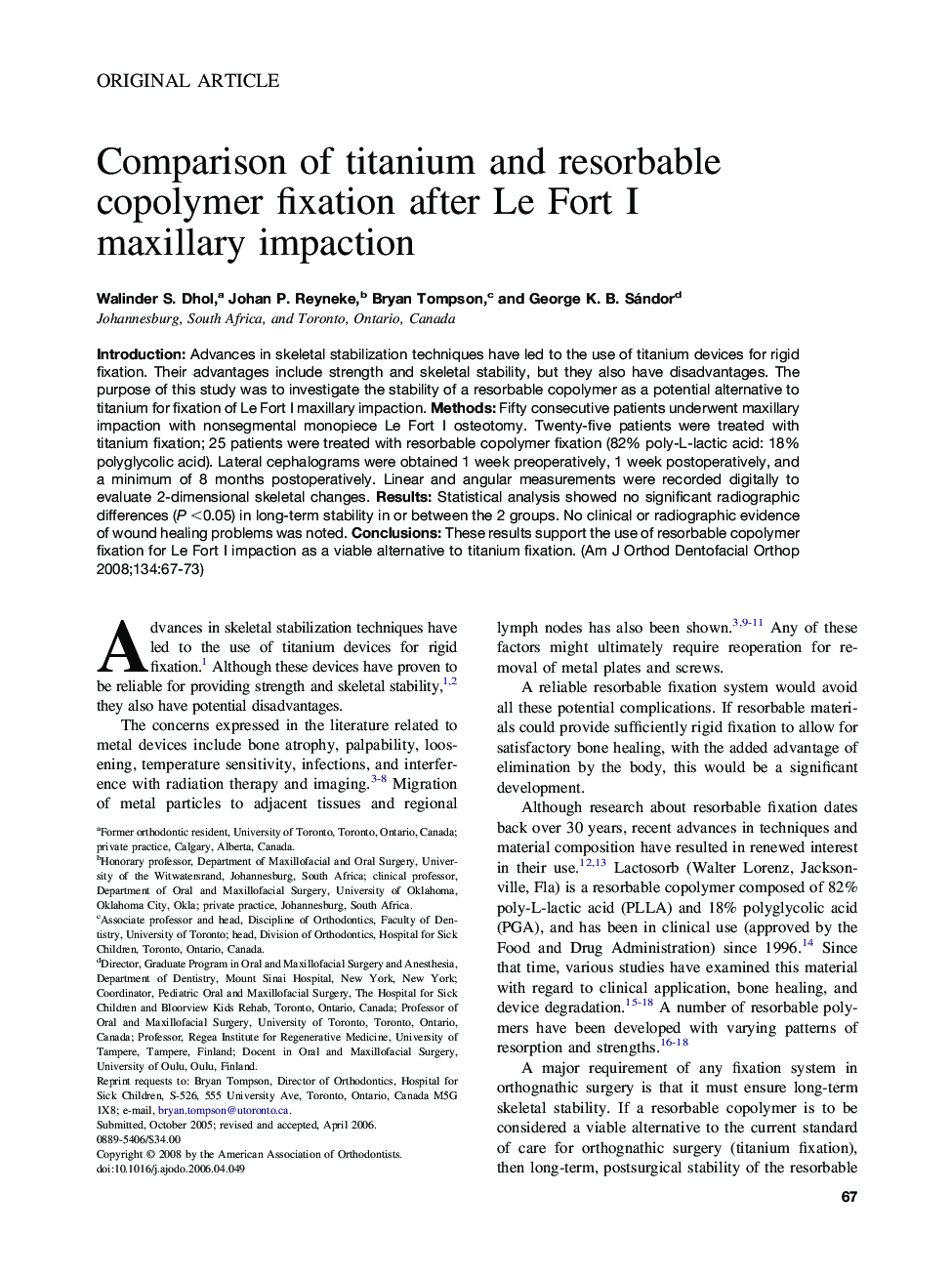| Article ID | Journal | Published Year | Pages | File Type |
|---|---|---|---|---|
| 3118888 | American Journal of Orthodontics and Dentofacial Orthopedics | 2008 | 7 Pages |
Introduction: Advances in skeletal stabilization techniques have led to the use of titanium devices for rigid fixation. Their advantages include strength and skeletal stability, but they also have disadvantages. The purpose of this study was to investigate the stability of a resorbable copolymer as a potential alternative to titanium for fixation of Le Fort I maxillary impaction. Methods: Fifty consecutive patients underwent maxillary impaction with nonsegmental monopiece Le Fort I osteotomy. Twenty-five patients were treated with titanium fixation; 25 patients were treated with resorbable copolymer fixation (82% poly-L-lactic acid: 18% polyglycolic acid). Lateral cephalograms were obtained 1 week preoperatively, 1 week postoperatively, and a minimum of 8 months postoperatively. Linear and angular measurements were recorded digitally to evaluate 2-dimensional skeletal changes. Results: Statistical analysis showed no significant radiographic differences (P <0.05) in long-term stability in or between the 2 groups. No clinical or radiographic evidence of wound healing problems was noted. Conclusions: These results support the use of resorbable copolymer fixation for Le Fort I impaction as a viable alternative to titanium fixation.
